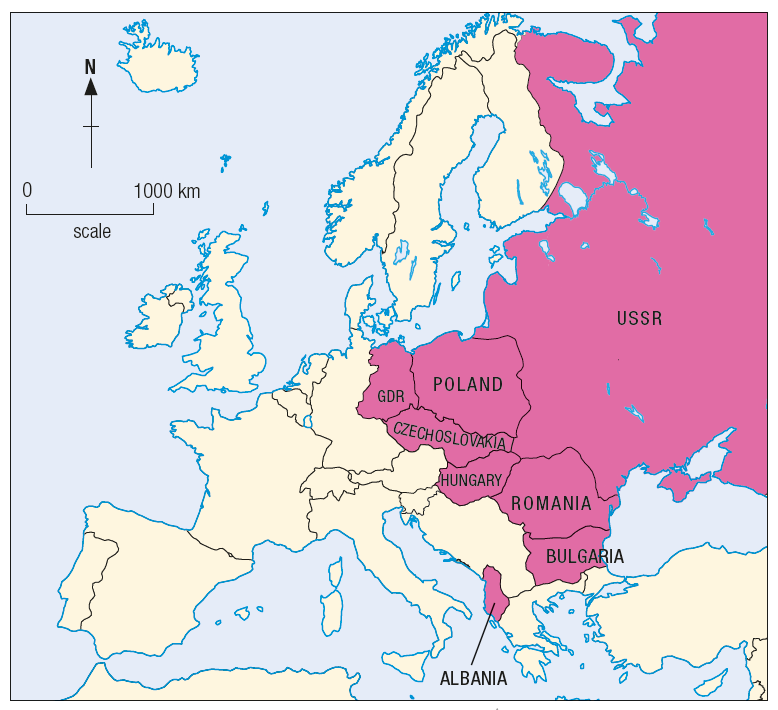6. How secure was the USSR’s control over Eastern Europe, 1948–c.1989?
 As you have seen, the countries of the Eastern bloc shared many characteristics by 1950:
As you have seen, the countries of the Eastern bloc shared many characteristics by 1950:
- They were all police states with secret police organisations modelled on the KGB and reinforced by informers
- All were one party states; although elections took place only 'official' candidates were allowed to stand in elections.
- Media and education was controlled
- State propaganda underpinned the system
- Personality cults developed around the leaders
- The ruling parties followed the lead of the Soviet Union in economic and social polices; they all took the Soviet version of Marxist-Leninism with its belief in an ultimately classless society as the ultimate goal and all followed the dictates of Soviet foreign policy
- Ultimately regimes were kept in power by oppression; the threat of Soviet intervention remained in the background.
What did this mean for ordinary citizens?
For the citizens of the satellite states, this situation meant:
A loss of freedoms: not just the loss of freedom to write and read what they wanted, but also the loss of freedom to travel to other countries. Any signs that you were too interested in the West or that you were not fully supporting the Communist country, or even worse, found criticising the Communist Party. would mean that you arrested and put in prison
Economic hardship: this repression was accompanied by a daily struggle to survive economically. While Western countries recovered economically in the 1950s and 1960s - helped initially by the Marshall Plan, citizens of the East European satellite states faced a decline in their wages; housing was also often of poor quality
Lack of consumer goods; in addition, there were shortages of basic goods - fuel, milk, vegetables, meat. Consumer goods such as televisions or cars or radios were low priority in the Soviet style economic planning and very few people had such luxuries. This of course was in stark contrast to the West where such items became much more common
These conditions contributed to several challenges to Soviet control. The first was in East Germany in 1953 followed by protests in Hungary (1956), Czechoslovakia (1968) and Poland (1980). None of these challenges were successful in fundamentally changing the system, and Communist rule remained secure. Nevertheless, the suppression of each protest had severe consequences for the country involved, for the Soviet Union itself and, ultimately, for the very survival of Communism.
The conditions above, also led to many East Germans fleeing to the West via Berlin; this form of protest was also ultimately stopped by the building of the Berlin Wall in 1961.
This section looks specifically at the protests in Hungary, Czechoslovakia and Poland as well as the circumstances that led to the building of the Berlin Wall.
The first 20 minutes of the People's Century Video People Power, episode 25 is excellent for an introduction to this unit as it shows what life was like for ordinary people in the Eastern bloc. It also covers the key events from 1980 leading to the collapse of communism so the rest of it can be shown for the final section of this unit as well. It is on YouTube - but also try Daily Motion if you cannot access it in your area.

